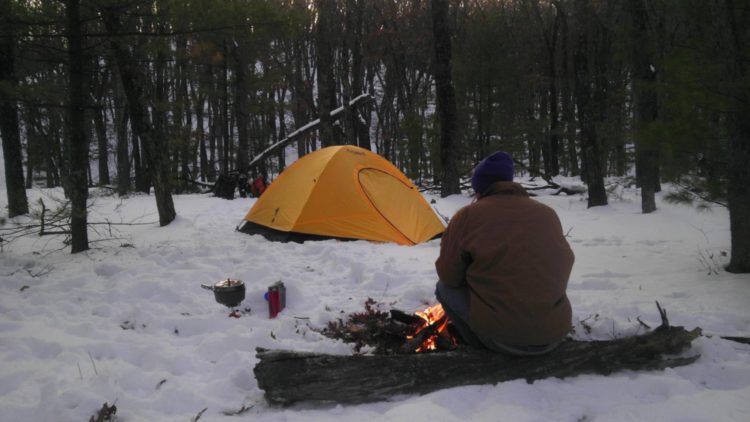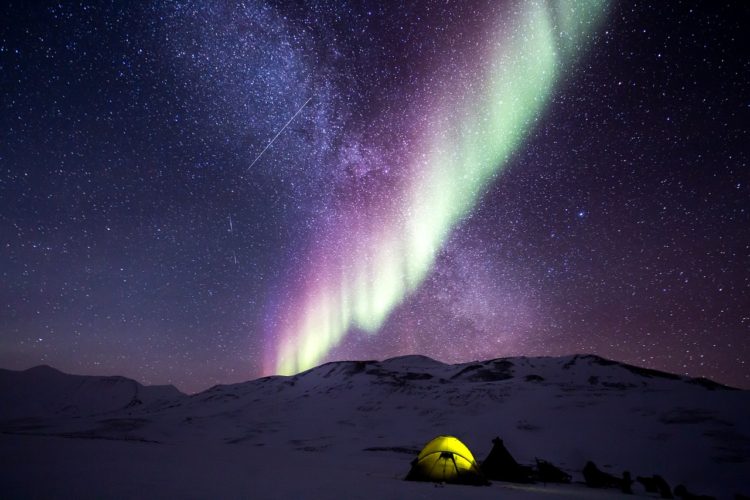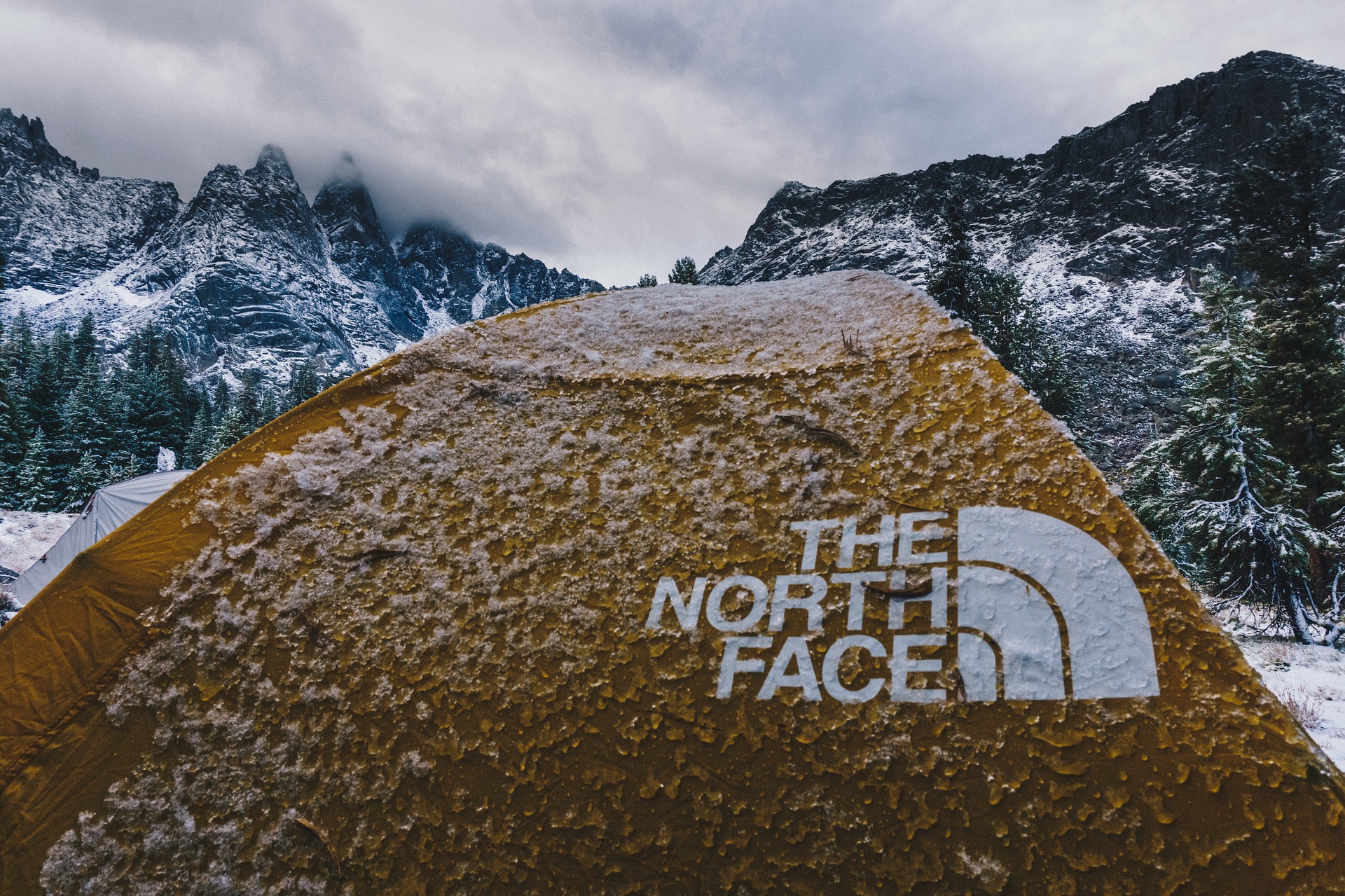When you’re first considering getting a tent for camping where it gets cold, it’s tempting to grab the smallest, heaviest tent you can find to stay warm. All other things being equal, a bigger tent is colder, but that’s not the full story. The tent construction and wall materials also play into how warm a tent is.
Staying warm while camping depends on many things, including individual metabolism and food intake, clothing, ambient temperature, and your full sleep system.
Based on my experiences backpacking in winter, and on Search and Rescue and Wilderness First Responder exercises, the tent is the least influential factor.
What you wear to bed, and the sleeping pad and bag you choose have far more bearing on how warm you’ll stay for the night. It’s easy to fall victim to thinking things like air mattresses and blankets will keep you warm, but even when car camping, air mattresses are a bad idea. Loads of cold air inside the mattress will sap your heat.
That being said, the tent does still play a large part in keeping you warm. Three major factors play into the warmth of a given tent: construction, enclosed volume (floor area and height), and material.
Table of Contents
Tent Construction

My first winter backpacking trip was over winter break, freshman year of college. A friend and I snowshoed into the back country pretty unprepared, and endured some minor suffering for it. We also didn’t recognize that the cold would allow us to bring bacon on our trip, a major disappointment in hindsight.
We had cheap, thin sleeping pads that let the ground sap warmth from our bodies, decent enough sleeping bags, but the worst part was our three-season tent. Three of those walls are mesh, down to about 4″ off the ground. The rainfly helped to keep some warmth in, but with the wind whipping through all night, we got pretty chilled in the 6° F and 15 mph winds.
The takeaway is that mesh walls don’t do much to keep you warm. We could have piled snow to break the wind some, but the best thing we could have done was borrowed a proper four-season tent (or even an extended three-season) from a friend.
Three-Season Tents
Three-season tents are mostly designed to keep you dry and free of bugs. They consist largely of mesh, which does very little to keep the wind out, but they’re very lightweight and a great option for backpacking.
If you end up camping in the snow with a three-season tent, one way to improve your situation is to mound up snow or leaves near the base of your rainfly. This keeps the wind from getting up inside your tent, and can keep you much warmer.
Extended-Season Tents
My favorite tent, the one I would own several of (if I could afford it) is the Eureka Timberline A-Frame. Tents like this one have nylon walls for all sides, with zipper panels that can be rolled out of the way on warm nights.
The Timberlines we had out at camp got us through plenty of late autumn and early spring climbing / camping trips, as well as hefty summer storms. We stayed warm and dry in all circumstances, even when we forgot to put down tarps during thunderstorms.
Not really full-on four-season tents, extended or 3+ season tents still offer much more protection from the cold and wind than a mesh-walled tent.
Four-Season Tents
Four-season tents often feature heavier fabrics, double-walled construction, and heftier poles.
Designed to take on the elements, these tents get pretty heavy to take backpacking in warmer weather. Four-season tents are not enjoyable to backpack on a long trek, but they’re pretty tolerable in a toboggan pulled behind skis.
If you opt for a full four-season tent, you’re likely going to want a second, lighter tent for warmer weather.
Enclosed Tent Volume

The more volume to a tent, the more dead air space to heat. Whether you’re heating the tent with a heater, or just body-heat, the result is the same.
A larger tent is colder, because your body can’t warm the larger enclosed volume as effectively.
Tents the size of small cabins are fun for large groups in the summer, but all that dead air space will chill you quickly in the colder weather.
Larger surface areas of fabric promote heat loss. If you’re a glutton for punishment, check out this US Army report from 1978 entitled “The Calculation of Heat Loss from Tents” on the particulars of calculating heat losses from the General Purpose Small and Medium canvas tents of the day.
Footprint / Floor Area
Tent footprint should be just large enough for the number of people sleeping in it, with maybe a little extra room to allow for easy exits for those 3 AM bathroom runs.
Having extra space inside your tent to store gear safely is great in the summer time, but creates much more air space to be heated. For cold-weather camping, tents with vestibules. areas outside the tent walls but still protected under the rainfly. are a better gear storage choice.
Tent Height
Tall tents give a great easy place to change, and can be very comfortable for people with limited mobility.
They also double, or even triple, the volume of air your body needs to heat.
When you’re camping in cold weather, lower tent ceilings are better. They’re not as accessible, but they keep you warm at night.
If you need to make a tall tent work, be sure to compensate with extra blankets, sleeping pads, or sleeping bags, and wear warm clothes to bed.
Tent Material
The material a tent is made out of is the least influential, as long as it’s solid and windproof.
That being said, heavier fabrics will offer slightly higher insulation values, commonly referred to in ordinary buildings as having higher R-Value.
Heavier fabrics are largely selected for their improved water and wind resistance, necessary for strong winter storms and large strains imparted by heavy snow loads.
What’s Next?
Before you head out camping, make sure you’re brushed up on your camping skills, even if you’re an expert you’re likely to be reminded of something in my Complete Camping Guide.
When it comes to survival shelters, smaller is better for cold weather, just like tents. For more info on cold-climate survival shelters, check out my article How Big Should a Survival Shelter Be?


